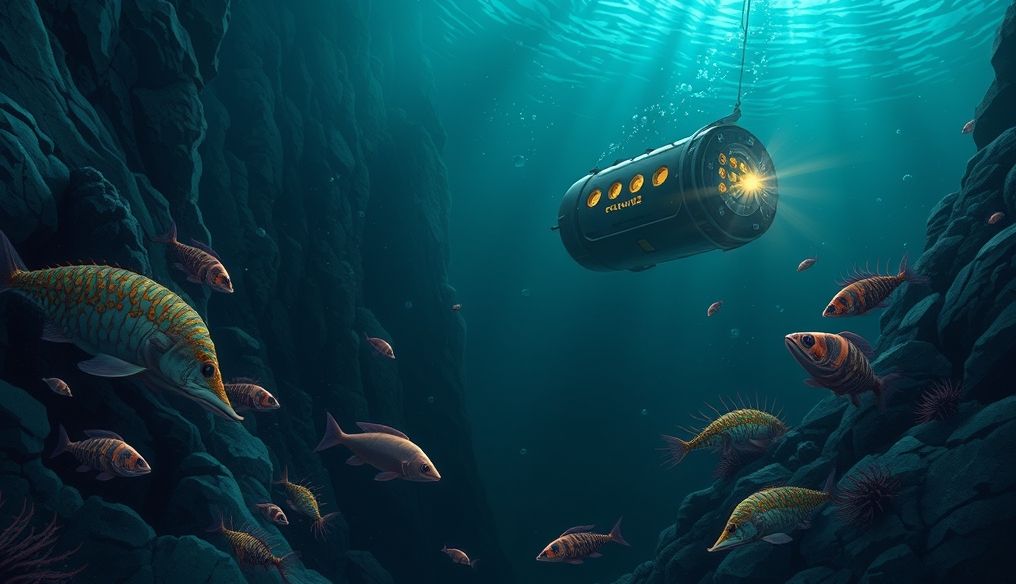What is the Deepest Point in the World's Oceans and How Was it Discovered?
Imagine standing on the summit of Mount Everest, the highest peak on Earth. Now, imagine flipping that mountain upside down and placing it in the ocean. There would still be room to spare! This gives us an idea of just how deep the Mariana Trench is, the deepest known point in the world's oceans.
The Mariana Trench: An Overview
The Mariana Trench is located in the western Pacific Ocean, east of the Mariana Islands. It stretches in a crescent shape for about 2,550 kilometers (1,580 miles) and is about 69 kilometers (43 miles) wide. But it's the depth that truly sets it apart. The deepest point in the trench, known as the "Challenger Deep," lies at a depth of approximately 10,935 meters (35,876 feet). For comparison, Mount Everest is about 8,848 meters (29,032 feet) tall.
The Discovery of Challenger Deep: A Pioneering Story
The Mariana Trench was first discovered during the Challenger Expedition of the British Royal Navy in 1875. The ship HMS Challenger used weighted ropes to lower sounding lines to the ocean floor. They recorded a depth of 8,184 meters (26,850 feet) in that area.
Later, in 1951, the British Royal Navy survey ship HMS Challenger II conducted a more accurate survey using sonar technology. They recorded a depth of 10,900 meters (35,761 feet), which is very close to modern measurements. In honor of the original Challenger ship, the deepest point in the trench was named "Challenger Deep."
Challenges of Exploring the Deep
Exploring the Mariana Trench is no easy feat. There are several challenges that must be overcome:
- Immense Pressure: At Challenger Deep, the pressure is about 1,086 bars (15,751 psi). That's more than a thousand times the standard atmospheric pressure at sea level.
- Complete Darkness: Sunlight does not reach this depth, making the environment completely dark.
- Freezing Temperatures: The water temperature near the bottom of the trench ranges between 1 and 4 degrees Celsius (34 and 39 degrees Fahrenheit).
- Technical Challenges: Building submersibles and equipment capable of withstanding these extreme conditions requires advanced technology and specialized materials.
Submersibles and Exploratory Missions
Despite these challenges, several explorers and scientists have made daring ventures to the Challenger Deep:
- Trieste: In 1960, Jacques Piccard and Don Walsh became the first people to reach the bottom of the Challenger Deep in the bathyscaphe Trieste. The journey took about five hours to reach the bottom and three hours to return.
- Deepsea Challenger: In 2012, filmmaker James Cameron made a solo dive to the Challenger Deep in the submersible Deepsea Challenger. Cameron collected samples and images of the environment at the bottom.
- Remotely Operated Vehicles (ROVs): Remotely operated vehicles are increasingly being used to explore the Mariana Trench. These vehicles can operate without direct human intervention, allowing scientists to collect data and images from a safe distance.
Life in the Dark Depths: Unique Creatures
Despite the extreme conditions, the Mariana Trench is home to a variety of unique creatures. These include:
- Amphipods: Small, shrimp-like crustaceans that are adapted to the high pressure.
- Sea Cucumbers: Slow-moving creatures that feed on organic matter on the seabed.
- Ghostfish: Translucent fish that live in the deep ocean.
- Piezophilic Bacteria: Bacteria that thrive under high pressure.
These creatures rely on various food sources, including organic matter falling from the surface, and chemosynthesis around hydrothermal vents.
The Importance of Exploring the Mariana Trench
Exploring the Mariana Trench is of great importance for several reasons:
- Understanding the Limits of Life: Studying the creatures that live in the Mariana Trench helps us understand the limits of life on Earth and how organisms can adapt to extreme conditions.
- New Scientific Discoveries: Exploring the trench can lead to new scientific discoveries in fields such as biology, oceanography, and geology.
- Understanding the Impact of Pollution: It can help us understand how pollutants reach the deep ocean and their impact on the marine environment.
- Developing New Technologies: Exploring the trench requires the development of new technologies that can be used in other fields, such as space exploration.
Human Impact on the Deepest Point on Earth
It is concerning that even the deepest point in our oceans is not immune to human impact. Traces of pollution, including microplastics and persistent organic pollutants, have been found in the Mariana Trench. This highlights the urgent need to reduce pollution and protect our marine environment.
The Future of Deep-Sea Exploration
As technology advances, we can expect more exploration of the Mariana Trench and other deep-sea environments. These explorations will help us better understand our planet and protect our marine environment for future generations.
Conclusion
The Mariana Trench is a fascinating and mysterious place. It presents a significant challenge to exploration, but it also holds great promise for scientific discovery. By understanding this unique place, we can learn more about our planet and our future.
Additional Resources:




